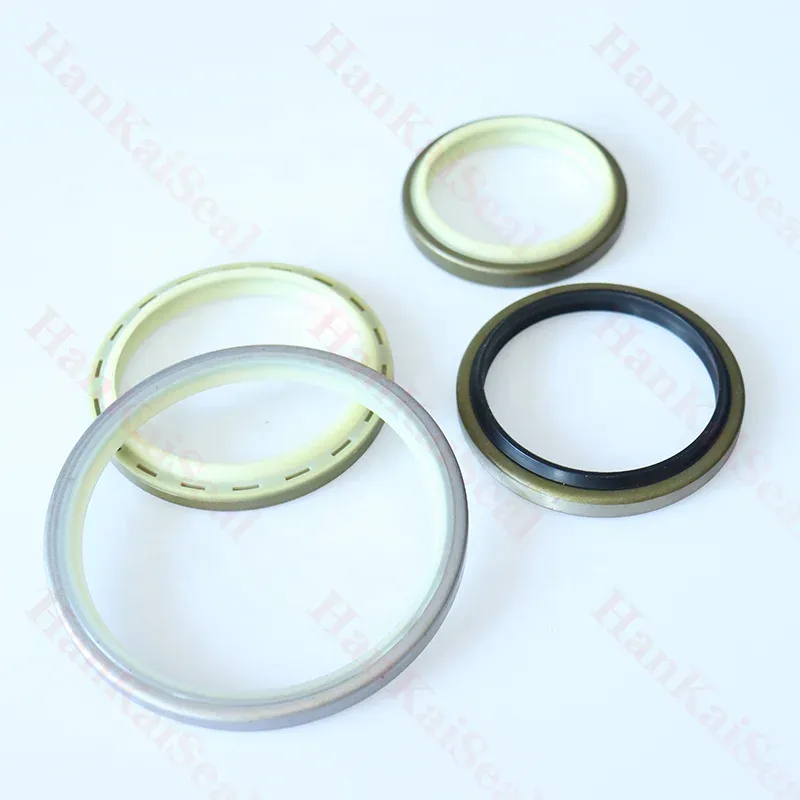ກ.ກ. . 31, 2024 21:36 Back to list
Understanding Hydraulic Cylinder Seals for Enhanced Performance and Longevity in Fluid Power Systems
Hydraulic Cylinder Seals An Overview
Hydraulic systems are fundamental to numerous industries, enabling the conversion of hydraulic energy into mechanical power. At the heart of these systems are hydraulic cylinders, which rely on effective seals to maintain pressure, prevent leaks, and ensure efficient operation. This article delves into the types, functions, and importance of hydraulic cylinder seals.
Understanding Hydraulic Cylinder Seals
Hydraulic cylinder seals serve as barriers that prevent fluid from escaping the cylinder while maintaining its functionality. These seals are engineered to withstand extreme pressures and temperatures, making them crucial for the reliable operation of hydraulic systems. The integrity of these seals directly impacts system performance, safety, and longevity.
Types of Hydraulic Cylinder Seals
There are several types of seals used in hydraulic cylinders, each designed for specific applications
1. Rod Seals These seals are located where the piston rod exits the cylinder. Their primary role is to prevent hydraulic fluid from leaking out while allowing the rod to move freely. Common materials for rod seals include polyurethane and rubber, which provide excellent wear resistance and flexibility.
2. Piston Seals Found within the cylinder, piston seals keep hydraulic fluid from bypassing the piston. They are designed to handle dynamic movements and are typically constructed from materials that can endure high pressures, such as nitrile or fluorocarbon elastomers.
3. Buffer Seals These are secondary seals placed behind the main rod and piston seals. They serve as an added layer of protection by absorbing shock from pressure spikes and preventing extruded material from damaging the primary seals.
4. Wiper Seals Positioned at the external end of the cylinder, wiper seals prevent dust, dirt, and debris from entering the cylinder. This is vital for maintaining the integrity of the internal components and extending the lifespan of the hydraulic system.
hyd cylinder seals

Functions and Importance
The primary function of hydraulic cylinder seals is to create a tight barrier that maintains system pressure. Effective seals ensure that hydraulic fluid remains contained within the cylinder, maximizing efficiency and performance. Their importance cannot be overstated; leaks not only compromise the effectiveness of the hydraulic system but also pose safety risks and lead to environmental concerns.
Additionally, seals play a critical role in minimizing maintenance costs. A hydraulic system with worn or damaged seals can lead to significant fluid loss, requiring constant monitoring and frequent refilling. This can increase operational costs and downtime. By investing in high-quality seals and regularly replacing them as part of maintenance routines, businesses can enhance their systems' efficiency and reliability.
Choosing the Right Seals
Selecting the appropriate seals for hydraulic applications involves considering several factors, including
- Operating Pressure and Temperature Different materials can resist different levels of pressure and temperature. Understanding these parameters helps in making informed decisions about seal selection.
- Fluid Compatibility The type of hydraulic fluid used can influence seal performance. It’s crucial to select seals made from materials that are compatible with the specific fluids in use.
- Application Specifics The environment in which the hydraulic system operates—such as exposure to chemicals, dust, or extreme conditions—can dictate seal choice.
Conclusion
Hydraulic cylinder seals are indispensable components of hydraulic systems. Their ability to maintain pressure, prevent leaks, and resist wear greatly impacts the efficiency and reliability of hydraulic operations. By understanding the types of seals available and their functions, engineers and technicians can make informed choices that enhance performance and longevity. Investing in quality seals and adhering to maintenance best practices can lead to substantial gains in productivity and safety across industries reliant on hydraulic systems.
-
The Trans-formative Journey of Wheel Hub Oil Seals
NewsJun.06,2025
-
Graphene-Enhanced Oil Seals: Revolutionizing High-Pressure Oil Sealing
NewsJun.06,2025
-
Future of Hydraulic Sealing: Advanced Intelligent TCN Oil Seals
NewsJun.06,2025
-
Don’t Let a Broken TCV Oil Seal Ruin Your Day
NewsJun.06,2025
-
Bio-Inspired Dust Seals for Better Sealing Performance
NewsJun.06,2025
-
Biodegradable and Sustainable Hydraulic Seal Materials
NewsJun.06,2025
-
Top Oil Seal Solutions for Your Industrial Needs
NewsMay.22,2025
Products categories
















